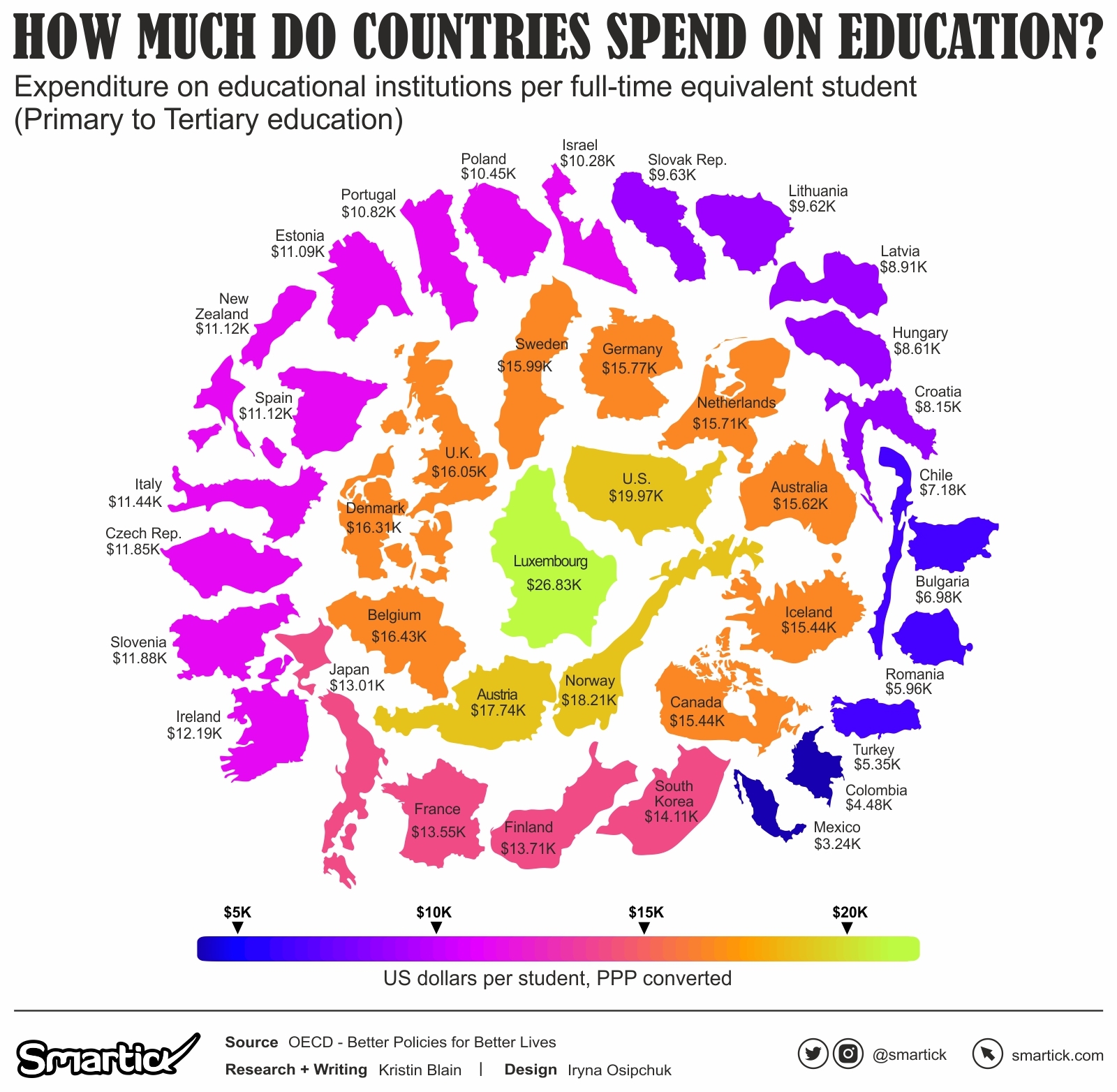
Governments worldwide are always on the lookout for ways to improve their education systems. They compare how much they spend on education and what they get in return. The OECD, which stands for Organisation for Economic Co-operation and Development, helps them with this task. They publish a report called “Education at a Glance” every year, packed with numbers and comparisons about education.

Understanding Education Spending
In this article, we’re going to delve into some of the data from the OECD’s report. We’ll focus on how much different countries spend on each student and how it relates to their national income. This is important because it tells us a lot about how well countries are investing in their future through education.
Let’s start with the basics. Education spending per student means how much money a country puts into educating each student, from primary school all the way to college. The OECD says that, on average, countries spend around $12,500 per student every year. But this number changes a lot depending on where you look.
For example, Mexico and Colombia spend a lot less per student, around $3,200 and $4,500 respectively. On the other hand, Luxembourg spends a whopping $26,800 per student. That’s a huge difference! What’s behind this gap?
One big factor is how rich a country is. Countries with more money tend to spend more on education. But there are other things to consider too. For instance, how many students does each teacher have to handle? In Luxembourg, there are fewer students per teacher, so each student gets more attention. That costs money.
Evaluating Expenditure Relative to National Income
Now, let’s talk about how education spending compares to a country’s income. This is called “expenditure per student relative to GDP per capita.” It sounds complicated, but it’s not so bad. Basically, it tells us if a country is spending a lot on education compared to how much money its people make.

On average, OECD countries spend about 27% of their yearly income per person on education. But again, this varies a lot. Take Ireland, for example. They spend less than 15% of their income per person on education. On the flip side, the United Kingdom spends a whopping 33%! That’s a big chunk of their income.
But here’s the interesting part: even if a country doesn’t spend a lot per student, it might still be investing a big chunk of its income on education. Portugal is a good example. They spend less per student and have lower incomes compared to other OECD countries. But they still manage to put a larger chunk of their income into education than the average OECD country.
So, what does all this mean? Well, it tells us a lot about where countries stand in terms of investing in their future generations. The more a country invests in education, the better equipped its citizens will be to face the challenges of tomorrow.
In conclusion, education spending is a crucial aspect of any country’s development. By looking at how much countries invest in each student and how it relates to their national income, we can gain valuable insights into the strengths and weaknesses of their education systems. This data not only helps policymakers make informed decisions but also highlights the importance of investing in education for the future prosperity of nations worldwide.

